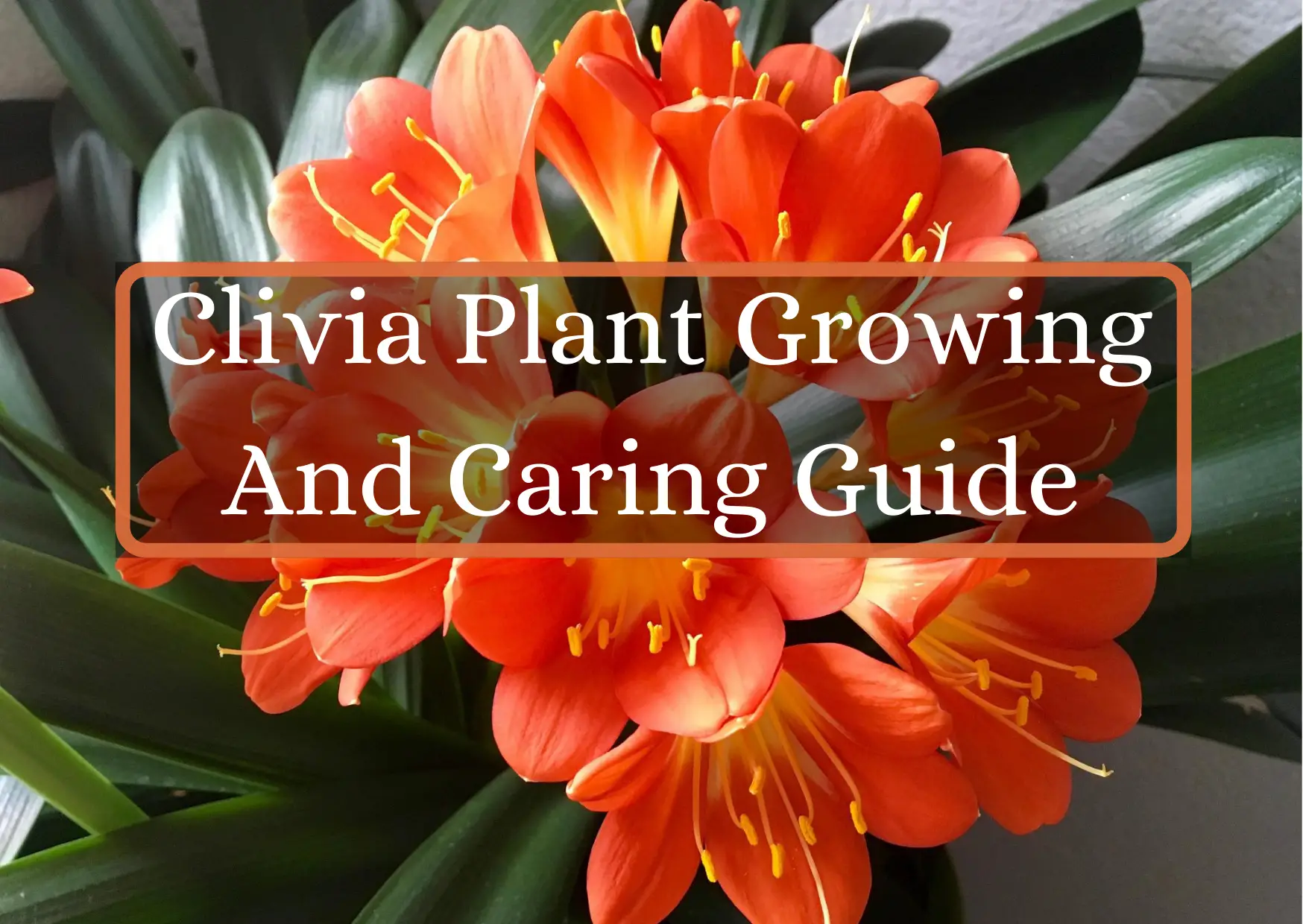Last Updated on April 11, 2024 by Real Men Sow
The Natal lily (Clivia miniata) is a bright, frost-tender house plant that looks great in a conservatory or home. From late winter to early spring, it has stocky stems topped with huge, spherical heads of colorful blooms. With wide, dark green, strap-shaped evergreen leaves that emerge from a swelling, fleshy root, Clivia foliage is architectural and appealing all year.
Clivia Plant Colours
Flowerheads are composed of eight to ten bell-shaped blooms that are normally orange in color, but yellow and red-flowered cultivars are occasionally available. Clivia is also known as the forest lily since it grows in woodlands in its native SouthAfrica.
Clivia may live for many years and reaches a height of 45cm and a width of 30-40cm. It’s worth noting that clivia is somewhat toxic – the sap is poisonous.

How To Grow Clivia
Clivia should be grown under cover in a frost-free location away from hot rooms, in bright light but out of direct sunlight. In the summer, water frequently, but only sparingly in the winter, when the plant should be ‘rested’ in a cold location. Feed in the spring and summer, and deadhead after the flowers fade. In the spring, propagate from offsets.
Where To Grow Clivia
You can grow them as a houseplant, in a conservatory, or in a heated greenhouse in the winter. They require a minimum temperature of 5°C to thrive, and lower temperatures might cause frost damage. Avoid placing clivia in hot, centrally heated rooms or near heat sources such as a heater or fire. Instead, place it in strong light but out of direct sunlight. If given a protected area out of direct sunlight during the summer months, clivia can be taken out into the garden.
Caring For Clivia Plant
Getting clivia to flower every year requires adjusting watering to the season and giving the plant a ‘rest’ over the winter. In the summer, water the compost on a regular but moderate basis to keep it damp but not wet. ‘Rest’ clivia by keeping it in a cool spot (at a maximum temperature of 10°C) and watering sparingly during the winter, from November to March.\
How often should you feed clivia plant
Feed once a week with a normal home plant fertilizer till the end of the summer when the flower spike appears. If you wish to harvest seed, cut off the fading head and stem once flowering has ended.
Repotting Clivia plant
Only repot and/or propagate when absolutely necessary, as clivia does not want to be disturbed. Replace the top 5-8cm of compost with fresh potting soil if not repotting.
How And When To Repot Clivia
Clivia only needs to be repotted once the existing pot is overflowing with roots. Only go up one pot size at a time, gradually increasing the size. Finally, clivia thrives in a container with a diameter of at least 20cm.
Use a good quality, peat-free multi-purpose potting compost with additional loam to repot only as necessary in the spring. Make that the fleshy bulb-like rhizome, or swelling root, has a neck that is above soil level.
How To Propagate Clivia
- Plant new clivia plants from seed or by cutting off the plant’s outside portions, known as offsets. Flowers from propagated plants can take several years to appear.
- When the berries become red, collect and plant seeds. Sow in tiny pots of damp seed compost and set in a warm position for up to two months for germination.
- Early in the spring, detach offsets with a sharp knife, ensuring that each has plenty of roots, and pot up either individually or in a large pot with multiple offsets.
Issues When Growig Clivia
You can avoid the majority of potential difficulties by planting your clivia in the proper spot and paying attention to watering. Sun scorch, insufficient water, or cold cause brown spots, tips, or edges to the leaves. Always avoid overwatering, especially allowing the plant to sit in water, since this can cause the fleshy roots to rot.
Mealybugs appear as white wooly spots on leaves, especially at leaf joints. Regularly inspect plants for tiny pests and remove them with cotton wool buds dipped in methylated spirits.
Advice On Buying Clivia Plants
- You can find Clivia in garden centers, but there is a larger range online.
- Before buying/planting, inspect plants for signs of damage and illness.

